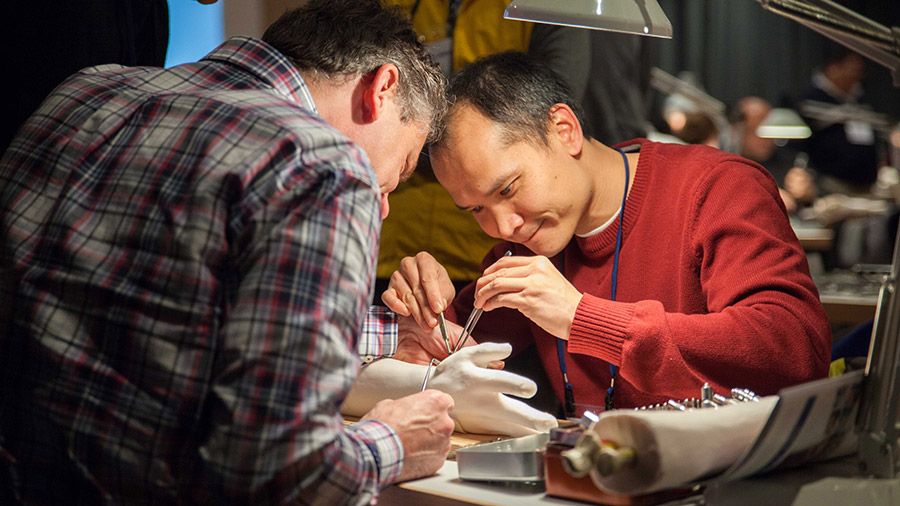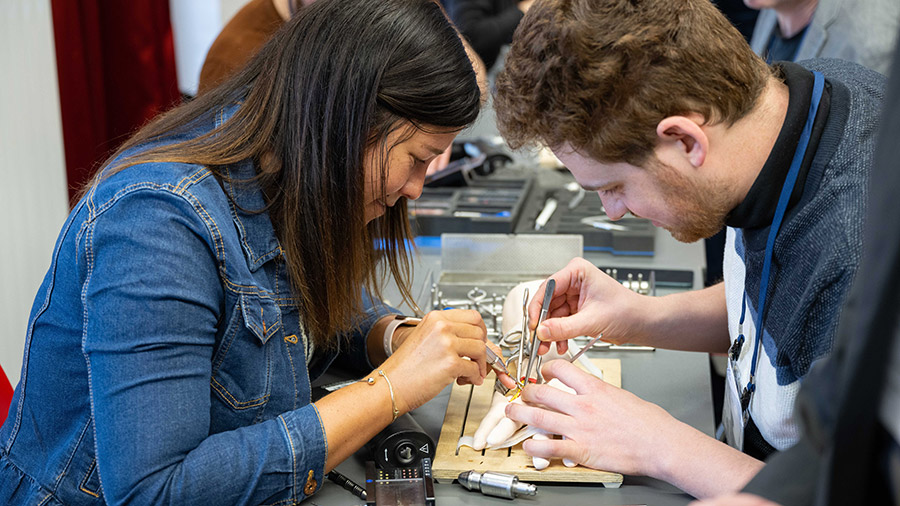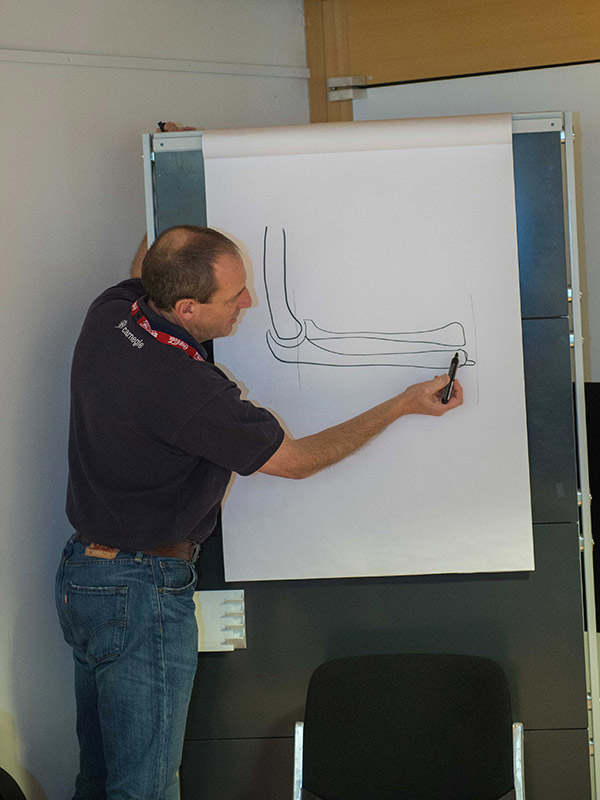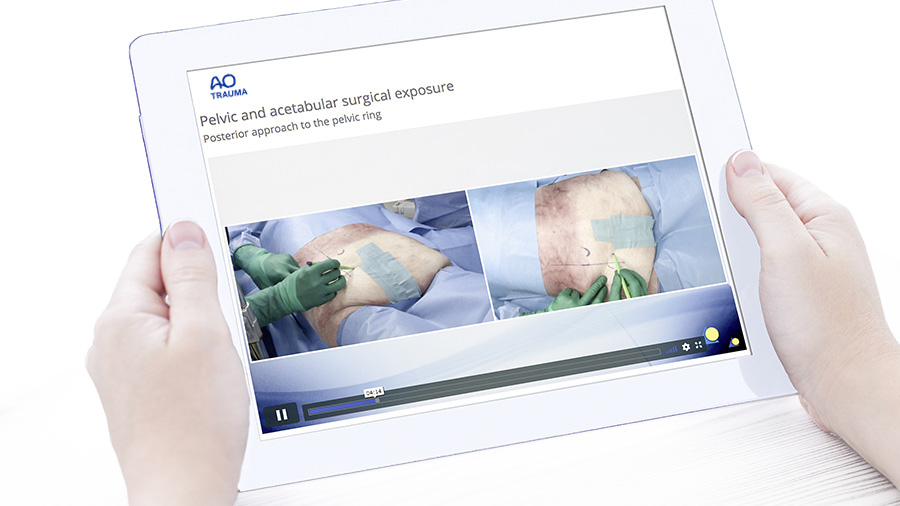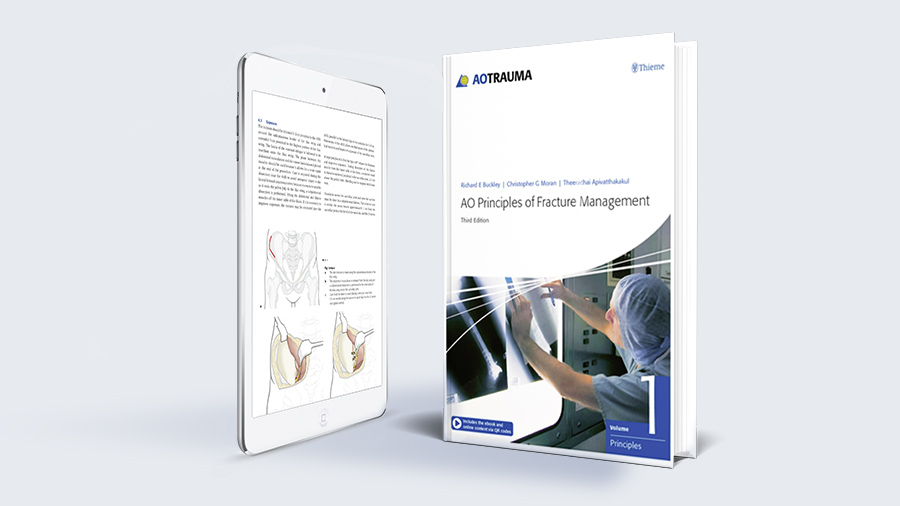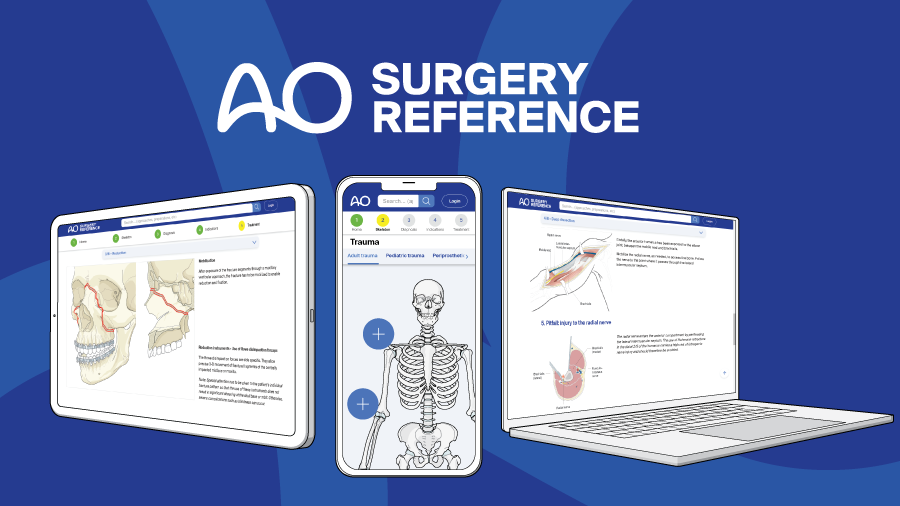AO Trauma Masters Course—Management of Hand and Wrist Fractures
The goal of this course is to increase knowledge and skills for managing difficult and complex cases in the hand and wrist. As a Masters' level course, state-of-the-art techniques and approaches, best practices for treatment, and the management of complications will all be addressed at a high level.
As this is a Masters' level course, participants should have several years of experience in management of complex hand injuries and complications. Participants have preferably already completed the AO Trauma Course— Management of Hand and Wrist Injuries and the AO Trauma Course—Advanced Principles of Fracture Management.
Why you should choose this course
Top national, regional, and international faculty
2-3 days in duration
Hand and wrist surgeons and hand fellows
Network with colleagues from all over the world
CME credits
Course content
-
Course modules
- Combined injuries
- Complications of phalangeal and metacarpal fractures
- Proximal interphalangeal joint injury and sequelae
- Scaphoid fracture and sequelae
- Carpal fracture dislocations
- Skin coverage of complex wounds of the hand and wrist
- Complications of distal radial fractures
- Distal radioulnar joint (DRUJ)—injuries and salvage
- Wrist complications
-
Included lectures and sessions
- Plenary session—Introductory case—mangled hand
- Case discussion: extraarticular malunited fracture of phalanges
- Round table discussion: Complications of phalanges and metacarpals
- Nonunions and extraarticular malunions of phalanges and metacarpals
- Case discussion: intraarticular malunion of PIP joint
- Faculty panel discussion—PIP joint injury and sequelae
- Intraarticular malunions of finger joints
- Case discussion: complex nonunion
- Vascularized versus conventional bone grafting
- Case discussion: carpal fracture dislocations
- Carpal fracture dislocations
- Case discussion: skin coverage of complex wounds of the hand and wrist
- Reconstructive ladder of soft-tissue coverage
- Case discussion: malunited fracture of the distal radius
- Distal radial complications including CRPS
- Case discussion: DRUJ salvage
- DRUJ instability and salvage for traumatic disruption
- Case discussion: wrist complications
- Faculty panel debate on proximal row carpectomy (PRC) versus four-corner fusion
-
Small Group discussions
- Combined injuries
- Scaphoid fracture and sequelae
- Carpal fracture dislocations
- Skin coverage of complex wounds of the hand and wrist
- Complications of distal radial fractures
- DRUJ injuries and salvage
- Wrist complications
-
Anatomical Specimen Lab*
- Volar approach to the proximal interphalangeal (PIP) joint and hemihamate arthroplasty
- Metacarpal bone defect
- Bone graft
- Plate fixation tendon transfer
- Coverage with forearm radial artery flap
- Radial palsy tendon transfer
- Thumb basal joint arthritis and
- Trapeziometacarpal (TMC) instability
- Posttraumatic (chronic) distal radioulnar joint instability
- Scapholunate dissociation (soft-tissue reconstruction)
- Ulnar shortening osteotomy (distal or shaft)
- Corrective osteotomy—metacarpal rotational malunion of the small finger
- Wrist, distal radial malunion: dorsal approach intraarticular, intraarticular osteotomy, bone graft, dorsal plate fixation
- Scaphoid grafting and open reduction and internal fixation (ORIF)
- Scapholunate advanced collapse (SLAC) wrist—four-corner fusion—intercarpal fusion plate/headless compression screws
*Only in selected courses. Check your chosen date and location for the full program.
Course details may be subject to change. Please check your chosen date and location for the detailed program.
Target audience
- Hand and wrist surgeons and hand fellows with an interest in trauma and reconstruction.
Competencies
- Perform pre-treatment assessment including physical examination, patient history including comorbidities
- Order and interpret imaging, classify skeletal and soft-tissue injury
- Decide on appropriate treatment based on skillset and available resources
- Apply the necessary soft-tissue repair techniques
- Correct any skeletal deformity and apply appropriate internal or external stabilization using the instruments and tools correctly
- Evaluate and address unexpected outcomes
- Develop and implement a rehabilitation and follow-up plan
What does competency-based curriculum development mean?
Resources
MEMEBERS ONLY
New teaching videos
A new series of AO Trauma Hand and Wrist practical exercises teach the techniques and principles of hand surgery using the new Variable Angle (VA) Modular Hand System for best practices in hand fracture fixation.
AO Surgery Reference
Explore the award-winning online repository for surgical knowledge, describing the complete management process from diagnosis to aftercare for fractures in a given anatomical region.
Hand and wrist education taskforce

Aida Garcia (Colombia)
Term: 2025–2027

Yukichi Zenke (Japan)
Term: 2026–2028

Abdel-Hakim Massoud
Term: 2026–2028
See a full list of all regional program contributors and past international program editors.
Not the right course?
Find our list of all curricula courses here.

